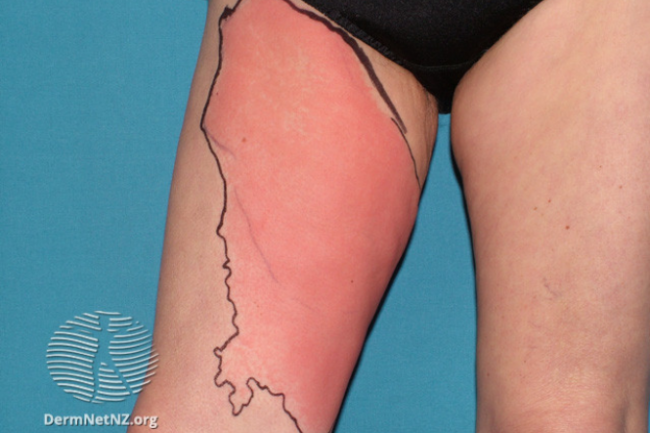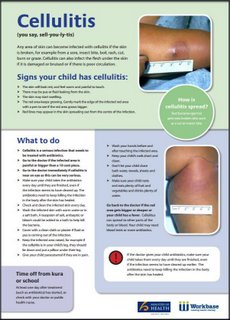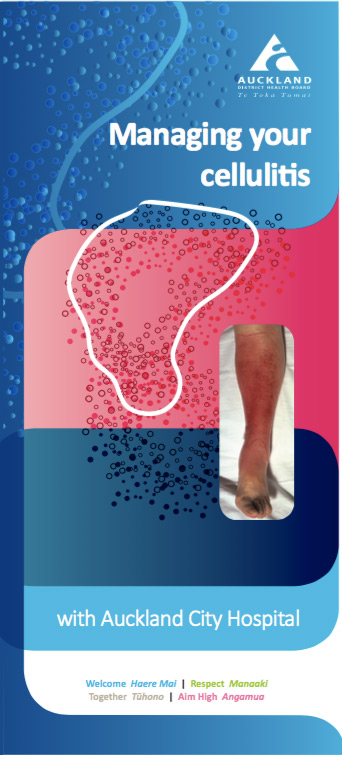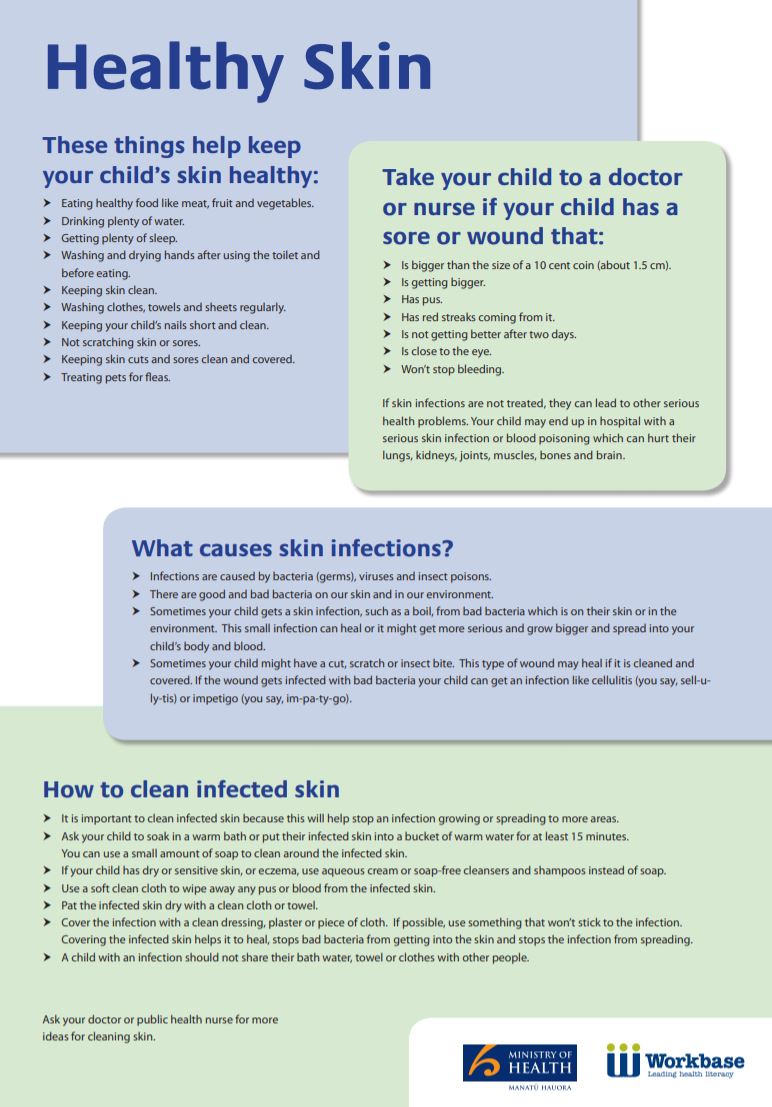The treatment for cellulitis is antibiotics.
- For mild cellulitis affecting a small area of skin, you'll be prescribed antibiotic pills.
- If it's more severe you may need intravenous (IV) antibiotics (into a vein). Your healthcare provider may arrange for you to have IV antibiotics without needing to go to hospital. As the infection improves, you may be able to change from intravenous to oral antibiotics, which can be taken at home for a further week to 10 days. Most people respond to antibiotics in 2 to 3 days and begin to show improvement.
- You may also be seen by a skin specialist (dermatologist), or by an eye specialist (ophthalmologist) if your cellulitis is near your eye.
Antibiotics
To help your body fight the infection, you will need antibiotics. Make sure you understand how to take the antibiotics – how many times per day and what dose. Take the antibiotics every day until they're finished. It's important to do this even if the infection seems to have cleared up as there may be infection under the skin that you can’t see.
Note that the redness may continue to spread during the first 2 days of taking antibiotics. You should go back to your healthcare provider if the red area gets much bigger or you have a fever. Cellulitis can spread to other parts of your body or to your blood. You may need blood tests and/or more antibiotics.
Your healthcare provider may mark the edge of the red area with a marker pen. Don't wash this off. This is so they can see if your skin infection is improving.
Most people make a full recovery after 7–10 days. If your symptoms are improving, you can stop taking antibiotics at the end of the prescribed course. If you're not sure, talk to your healthcare provider to see if you need another course of antibiotics.
Pain relief
Cellulitis can be quite painful because it puts pressure on the skin from underneath. You can take pain relief medicines (eg, paracetamol) or an anti-inflammatory (eg, ibuprofen). Your healthcare provider will talk to you about appropriate pain relief and may give you a prescription. It’s also important to rest the affected area. The pain eases once the infection starts getting better.
Wound care
If you have a wound, it needs to be kept clean and covered with a dressing. Your wound should be checked every day. This may be by a nurse or an Accident and Medical centre team. They will change the dressing and check that the wound is healing.
If your healthcare provider decides you don’t need to see them every day, they will tell you how to look after your wound at home. If you have any concerns, ask your healthcare provider what to do.
Note that cellulitis doesn't cause pus. If you have pus coming from the wound you should tell your healthcare provider. There may be an abscess that needs to be drained for the infection to get better.
How can I care for my cellulitis?
As well as taking antibiotics, you can:
- Get plenty of rest. This helps your body to fight the infection. If you have cellulitis on your leg, limit walking for the first few days.
- Raise the affected body part on a pillow or chair when you're sitting or lying down. This helps reduce swelling. Continue to do this for the first 48 hours at least.
- If your arm or hand is involved, use a sling when walking around. This not only helps relieve pain but also helps the healing process.
- Drink plenty of fluids to prevent dehydration.
Contact your healthcare provider again if your cellulitis is getting worse, you are feeling more unwell or if there's no improvement after 2 days on antibiotics.










